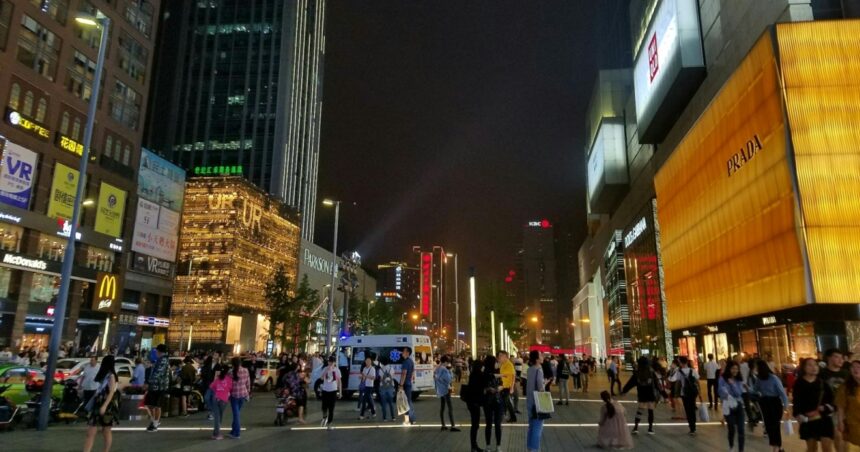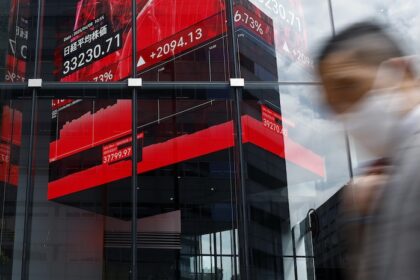Despite persistent global uncertainties and internal economic challenges, China’s retail sector delivered a significant upside surprise in May 2025. According to official data released by the National Bureau of Statistics (NBS), retail sales in China grew by 6.4% year-on-year, surpassing market forecasts and providing a much-needed signal of resilience in the world’s second-largest economy.
The better-than-expected performance not only highlights recovering domestic demand but also underscores the adaptability of Chinese consumers in the face of inflationary pressures, weakening global demand, and continuing trade and geopolitical tensions. As global markets grapple with fragile recovery paths and investor caution, China’s retail data offers a glimmer of optimism that consumption, the core driver of economic momentum, may be regaining traction in Asia’s powerhouse economy.
Retail Sales Rebound: Breaking Down the 6.4% Growth
Retail sales, a crucial indicator of consumer confidence and overall economic activity, reached impressive levels in May. The 6.4% increase exceeded economists’ expectations, which had projected growth closer to 5.1%, according to several market analysts polled ahead of the release.
This growth was led by several key sectors:
- Automobile Sales: Driven by tax breaks and promotions on electric vehicles (EVs), auto sales rebounded sharply, reflecting strong demand for next-generation transportation.
- Food and Beverage: The catering sector saw robust expansion as more consumers dined out and domestic travel picked up, especially during the Labor Day holiday period.
- Apparel and Daily Necessities: These segments also witnessed modest growth, attributed to seasonal spending and improved consumer sentiment in urban centers.
- Online Retail: E-commerce continued to perform well, with double-digit growth in online sales of physical goods, boosted by early summer shopping promotions and increased mobile purchasing behavior.
This widespread sectoral strength reflects an increasingly balanced recovery in domestic consumption, moving beyond the earlier post-COVID focus on luxury goods and travel to more sustainable, broad-based spending.
Context: A Recovery Under Pressure
China’s retail growth comes at a time of significant macroeconomic stress. The global economic environment remains volatile, characterized by the following factors:
- Lingering Inflation: Although inflation in China remains relatively contained compared to the West, rising costs for imported energy and raw materials continue to pressure household budgets.
- External Demand Weakness: With key export destinations like Europe and North America experiencing slowed growth, China’s export sector has come under strain, pushing the government to rely more on domestic consumption to fuel the economy.
- Property Sector Fragility: The ongoing correction in China’s real estate sector continues to weigh on consumer confidence, particularly among middle-class households who view property as a primary vehicle of wealth accumulation.
- Youth Unemployment and Income Concerns: High levels of youth unemployment remain a concern, limiting spending power among younger consumers, a demographic critical to the long-term vitality of the domestic retail market.
Despite these challenges, the resilience of the retail sector in May suggests that targeted fiscal policies and consumer incentives are beginning to bear fruit.
Policy Support and Strategic Shifts
China’s leadership has signaled its intention to pivot toward consumption-led growth over the long term, and the May retail data indicates early progress in this direction. Several government initiatives contributed to the positive retail figures:
- Subsidies and Tax Breaks: Continued government incentives on consumer durables, such as home appliances and electric vehicles, encouraged big-ticket purchases.
- Stimulus for Lower-Income Groups: Regional subsidies and e-vouchers aimed at rural and low-income urban populations boosted consumption among more financially constrained groups.
- Holiday Promotions and Cultural Events: The May Day Golden Week, marked by extensive shopping festivals and tourism promotions, played a significant role in stimulating consumer spending, especially in the hospitality and entertainment sectors.
- Digital Commerce Infrastructure: Government support for digital payment systems, logistics, and rural e-commerce hubs has expanded access to goods and services, even in less-developed regions.
These measures form part of a broader economic strategy to insulate China from global shocks by enhancing the role of domestic consumption as a stable driver of GDP growth.
Implications for the Global Economy
The surprising strength of China’s retail sector has implications beyond its borders. As one of the key drivers of global demand, a rebound in Chinese consumption could support global supply chains, commodity prices, and multinational corporate earnings.
- Commodities: Increased consumer demand, especially in energy-intensive industries and personal transport, could bolster global oil and metal prices.
- Global Brands: Multinational companies with strong exposure to China’s retail market, including luxury fashion, electronics, and fast-moving consumer goods (FMCG), stand to benefit from increased sales.
- Market Sentiment: Global investors monitor Chinese economic data closely, and May’s retail numbers could provide reassurance in a climate of cautious optimism. Equity markets, especially in Asia-Pacific, may react positively to signs of consumption-led recovery in China.
However, geopolitical frictions, such as ongoing US-China tensions and concerns over Taiwan, remain potential headwinds that could dampen investor enthusiasm or disrupt trade flows.
Outlook: Can the Momentum Last?
The central question now is whether this retail sales momentum is sustainable. There are reasons for cautious optimism, as well as valid concerns:
Reasons for Optimism:
- Continued policy support for consumer-facing industries.
- Gradual recovery in the job market.
- Steady income growth in Tier 1 and Tier 2 cities.
- Technological innovation driving new consumer behaviors.
Risks and Limitations:
- The real estate sector may continue to weigh on household wealth and spending.
- Weak global trade could spill over into domestic job losses.
- Persistent uncertainty could erode consumer confidence.
- The potential resurgence of inflation could tighten household budgets.
Ultimately, maintaining this retail revival will require balanced macroeconomic management and careful coordination between fiscal, monetary, and regulatory policies. Policymakers must also address structural issues, such as income inequality and urban-rural divides, to make consumption growth more equitable and resilient.
Conclusion
China’s May retail sales report paints a cautiously optimistic picture of the country’s post-pandemic economic trajectory. In the face of significant domestic and international challenges, a 6.4% year-on-year rise in consumer spending underscores the strength of the underlying demand and the effectiveness of recent policy interventions.
While structural vulnerabilities persist, the resilience of China’s retail sector offers a hopeful sign—not only for Beijing’s goal of transitioning toward a consumption-driven economy but also for global markets looking for signs of stable demand in a fragile world order.
As China continues to adjust its growth model and navigate an uncertain global environment, the performance of its retail sector will remain a key barometer of economic health and consumer confidence.










